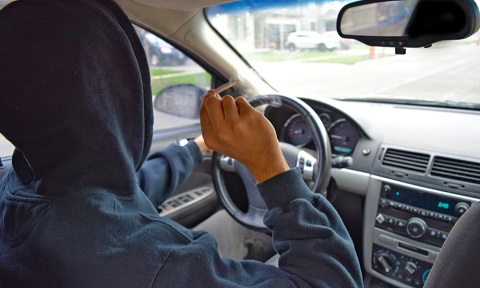AAA Study Reveals Attitudes Toward Marijuana Use and Driving in the U.S.
It’s undeniable that with the progress of marijuana reform in the country, Americans have become much more relaxed about marijuana use, sometimes even ignoring the real risks of driving under its influence, citing the ongoing legalization in various regions. According to a new statistical study, many U.S. citizens see nothing wrong with occasionally driving after using marijuana, despite the strict penalties universally enforced across the country for such offenses.
A study released last week by the Public Safety Committee of the American Automobile Association (AAA) found that about 14.8 million members of the organization admitted in an anonymous survey that, at least once in the past month, they had driven a car shortly after using marijuana. Additionally, around 70% of respondents told analysts they didn’t see much wrongdoing in this behavior, as they doubted the police’s ability to effectively detect drivers under the influence on the road.
Understandably, Dr. David Young, the executive director of the committee, was deeply concerned by these findings. He issued a separate press release urging club members to act more responsibly on the roads and describing the negative impact of marijuana on a driver’s reaction time. The organization’s leadership also highlighted, referencing statistics from several regions, that drivers who used marijuana within an hour before driving were generally more likely to be involved in traffic accidents.
Perceptions of Risk: Marijuana vs. Alcohol and Other Substances
Dr. Young also noted an interesting fact: the vast majority of respondents considered smoking marijuana before driving to be less of a threat than drinking alcohol or using other psychoactive substances before getting behind the wheel. Moreover, many respondents claimed that talking on the phone while driving was a much greater risk factor for accidents than using therapeutic or recreational marijuana. “It seems that, despite all the warnings and statistics, people don’t fully understand the dangers of using marijuana before driving,” Dr. Young commented.
Legal Consequences and Enforcement
As previously mentioned, despite the partial or full legalization of marijuana in many regions of the country, every state maintains a strict ban on marijuana use while driving. Notably, both of the first states to legalize marijuana—Washington and Colorado—enforce strict penalties for those arrested for driving under the influence of marijuana. In both states, a driver is considered impaired if blood tests show marijuana metabolites above 5 nanograms per milliliter.
In addition to strict regional and federal regulations, new technologies are helping police and authorities combat impaired driving by allowing roadside testing of drivers. As committee member Jake Nelson noted, “Widespread adoption of such devices by traffic police should completely eliminate the problem of impaired drivers.”
Public Awareness and the Need for Stricter Measures
Overall, the report paints a concerning picture for both activists and law enforcement: most U.S. drivers understand the risks of using alcohol or other psychoactive substances before driving (only 2% and 3% of respondents, respectively, said they were neutral about using such substances while driving), yet they ignore the impact of marijuana on their reaction time behind the wheel. This attitude is somewhat understandable—after all, marijuana is indeed less harmful to human health than alcohol, opioids, or neurostimulants. However, its use can still slow reaction times enough to significantly increase the risk of a driver being involved in an accident.
“It seems that survey participants don’t realize that by breaking the rules about marijuana use while driving, they’re endangering not only themselves and their passengers, but also all other motorists and pedestrians,” said Mr. Nelson. “For this reason, we need to strictly enforce penalties against such offenders before the number of marijuana-related accidents actually starts to rise.”



